
Leaders of Parks Canada |
|
Leaders of Parks Canada J.B. Harkin (1911-1936)1
"The Parks are hereby dedicated to the people of Canada for their benefit, education and enjoyment and such Parks will be maintained and made use of so as to leave them unimpaired for the enjoyment of future generations." With this dedication clause found in the National Parks Act of 1930, Harkin summed up his vision of what the role of national parks was, a vision acquired over two decades of leading the world's first parks service.
Harkin was named to the position of Commissioner of the Dominion Parks Branch after its creation in 1911. Over the next 25 years, Harkin was to take the world's first park service and develop it into a model for conservation and public enjoyment that is still evident in the Parks Canada of a century later. From these humble beginnings, he developed a wide framework that was to encompass the following themes: access to all, wildlife conservation, the need to promote the nation's history, the inviolability of parks, and the benefits to the nation of tourism.
On the conservation front it was evident that those responsible for parks had a careful balancing act to follow between the importance of construction and development work and the conservation of "natural beauties and scenic wonders, to the forests, animal, fish and bird life." He also encouraged science-based management of the parks, which he saw as necessary "if we are intelligently to administer the law and preserve our wild life.
In 1914, Fort Howe became Canada's first national historical park, marking the start of conservation and educational activities centered on historic sites. The creation of the Historic Sites and Monuments Board of Canada in 1919, which was to provide the government with expert advice as to which sites to designate due to their national historic significance, was yet another legacy left by Harkin. Eventually he saw that the nature of historic sites was fundamentally different from national parks, and so he advocated the legislative provisions to be developed so that this could be better reflected. Harkin was well aware of contribution that parks made to tourism and by consequence the benefit they had on the Canadian economy. With the rise in the popularity of the automobile, he saw the creation of roads, campgrounds and hotels in the national parks to provide visitors with accommodation while they enjoyed the natural wonders around them. Harkin retired in 1936. In a letter he wrote "I am passing the torch on and my earnest prayer is that the work will continue to be based on idealism. If that is ever lost, Parks will lose their soul, will become like tens of thousands of ordinary resorts throughout the world." 1Source: J.B. Harkin by E.J. (Ted) Hart, University of Alberta Press, 2010. Frank H.H. Williamson (1936-1941)1
Williamson was appointed Controller of the National Parks Bureau in 1936, after serving for many years as Harkin's principal aide as Assistant Commissioner of Parks. He had years of experience, working for the Parks Bureau since before the First World War, coupled with a detailed knowledge of the parks mandate. Williamson shared with Harkin the view that a return to nature in a national park would restore, fortify and inspire people. He once referred to the Garden of Eden as the first national park! With national parks mainly in western Canada up to this point, Williamson sought to expand the system, with parks "dotted all over the country in the vicinity of centres of population." He began in the east, developing Cape Breton Highlands and Prince Edward Island National Parks between 1937 and 1939.
Williamson also focused on national historic sites, overseeing the transfer of Green Gables and Dalvay-by-the Sea in Prince Edward Island to the Bureau. He was also involved in the development of Sir Wilfrid Laurier's birthplace in St. Lin, Quebec.
In 1939, Williamson along with W.D. Cromarty, his assistant with the national historic sites program, decided to implement an aspect of the National Parks Act of 1930, by classifying a number of larger historic sites and national parks as National Historic Parks. The Order-in-Council of 1940 bestowed National Historic Park status on the Fortress of Louisbourg, Fort Chambly, Fort Wellington and Prince of Wales' Fort, among others. This would give the department better control over its heritage operations, ensuring these properties would receive regular annual appropriations and be maintained by a salaried superintendent directly responsible to the Parks Bureau. Williamson was aware of and responsive to the latest findings on ecological research. He presided over the debate on predator species and their place in the parks. Previous policy had park wardens eradicating predator species in the parks, but Williamson issued directives restricting the killing of predators, based on research by biologists, and encouraged wardens to balance species in the parks. Williamson died in September 1941, cutting short his tenure as Controller of the National Parks Bureau. 1Taken from, A History of Canada's National Parks Vol. II, W.F. Lothian, Parks Canada, 1977; Negotiating the Past: The Making of Canada's National Historic Parks and Sites, C.J. Taylor, 1990; and Natural Selections: National Parks in Atlantic Canada, 1935-1970, Alan MacEachern, 2001. James Smart (1941-1953)1
After an early career in the Dominion Forest Service, Smart joined the National Parks Service in 1930. He served as superintendent at parks in Manitoba and the Maritimes before being appointed Assistant Controller in 1937 and Controller in 1941. During the Second World War, he established alternative work camps in the western parks, to provide employment to conscientious objectors. During this time, the first major expansion to campgrounds in the mountain parks took place, and skiing facilities in Banff, Jasper and Mt. Revelstoke were improved. Smart was a keen golfer, and he provided personal direction to the planning and development of courses in three maritime parks.
In an echo of Harkin's success in linking Alberta and British Columbia with the Banff — Windermere Highway, Smart initiated the construction of the Trans Canada Highway through Banff National Park.
A number of national parks were abolished during his tenure, as they had been established to provide sanctuaries for game animals threatened with extinction. Nemiskam Park and Buffalo Park in Alberta were abolished in 1947 because the pronghorned antelope and the buffalo were restored to satisfactory numbers and the parks were no longer required to preserve these species. In the spring of 1949 the Royal Commission on National Development in the Arts, Letters and Sciences, or the Massey Commission, began touring the country holding public sessions in major cities. There the commissioners heard submissions on the state of arts, culture and heritage in the country. The Massey Report, released in 1951, was a document of utmost importance in the cultural history of Canada, and had implications for the National Parks Branch. Smart retired in February 1953, before any recommendations from the report could be implemented. 1Taken from, A History of Canada's National Parks Vol. II, W.F. Lothian, Parks Canada, 1977; and "Massey Commission," Canadian Enclyclopedia Online. J.A. Hutchison (1953-1957)1
During Hutchison's tenure, the development of national parks as tourist destinations took the form of building highways. Highways in Banff, Jasper and Cape Breton were improved and the Trans Canada Highway was extended from Banff to Yoho. The increased use of private cars and the growing popularity of camping and outdoor life led to the creation of additional campgrounds and trailer parks. A new campground at point Pelee put an end to scattered camping sites that were threatening the park's ecology. In the east, Terra Nova joined the parks system in May 1957.
The historic sites program received a boost under Hutchison's tenure. The increased profile of history and heritage resulting from the Massey Report led to legislation, funding and policy for the national historic sites program, something it went without for over 25 years.
In 1953, the Historic Sites and Monuments Act was passed, with amendments in 1955, which gave a legislative base to the historic sites program. Among many things, the Act provided for the designation of national historic sites on the basis of architectural significance. This opened a new avenue of program activity, the designation of historic buildings. In addition, the department enlarged traditional areas of development and embarked on large scale developments at existing historic sites across the country. During Hutchison's short time as leader, he helped increase the profile of the National Parks Branch among Canadians, and attendance increased by more than 1.5 million visitors. 1Taken from, A History of Canada's National Parks Vol. II, W.F. Lothian, Parks Canada, 1977; and Negotiating the Past: The Making of Canada's National Historic Parks and Sites, C.J. Taylor, 1990. J.R.B. Coleman (1957-1968)1
The Coleman years saw both an expansion of parks establishment and an extension of parks amenities. Continuing work on highways in parks encouraged more visitation and an expansion of visitor facilities. In 1959, the Education and Interpretation section was established under the Director of National Parks, with the purpose of developing a greater public understanding of the purposes and meaning of national parks. A Chief Park Naturalist was hired and seasonal naturalists were engaged in several parks. This led to the development of nature trails, field excursions, lectures and on-site exhibits to explain native wildlife and nature to visitors.
The rapid expansion of activities in national parks, and the tourist potential of national historic sites led to a major restructuring of the organization in 1966. Now known as the National and Historic Parks Branch, it moved into the Department of Indian Affairs and Northern Development. The increase in park visitation during Coleman's time saw a rise from 4 million in 1957 to 13 million a decade later. This was in part due to the completion of major highways and scenic highways in both the east and west. Campgrounds featuring modern design techniques were welcoming 1.2 million campers a year by 1967 and Kejimakujik joined the parks system as Nova Scotia's second national park.
The Coleman years also saw the expansion of the national historic site system. Over 80 national historic sites were designated under his tenure. There was also significant investment in existing national historic sites, including a number of major capital projects. In 1964, the Department acquired Bellevue House, a temporary home of our first prime minister, Sir John A. Macdonald. A careful restoration of the house, paying attention to the architectural details and the original interior layout, was a successful exercise in restoration technique. Bellevue House was opened to the public in 1967 as a showpiece during Canada's centennial year.
A major achievement for the Department under Coleman was the reconstruction of the 18th century Fortress of Louisbourg. The federal government committed to fund the multimillion dollar project in 1961. It began with preparatory research spanning the globe and culminated in the reconstruction involving experts along with local labourers. The result was the reconstruction of approximately one-fifth of the original town and its fortifications. The Fortress now stands as a living history museum, interpreting 18th century life to thousands of visitors each year. Though the reconstruction project was completed after Coleman's tenure in 1983, archaeological excavations continue today to unearth the rich and complex history of this site.2 1Taken from, A History of Canada's National Parks Vol. II, W.F. Lothian, Parks Canada, 1977 2HSMBC, Minutes, October 1964 and May 1966; L.D. Cross, "Fortress Louisbourg," Legion Magazine, http://www.legionmagazine.com/en/index.php/2004/01/fortress-louisbourg/, January 2004. John I. (Jack) Nicol (1968-1978)1
There are times when the stars in the political firmament align to allow great things to be done. Such it was in the decade that Parks Canada was led by Nicol. His minister, Jean Chretien, possessed the political acumen and love of nature to his job, and Prime Minister Trudeau shared their passion for wilderness and sense of place. Nicol, a tough, aggressive manager "who know how to get things done", added ten new national parks to the system, expanded the system of national historic sites, acquired historic canals, and established initiatives for heritage conservation nationally and internationally.
Over the previous 30 years, only three national parks had been created, so the establishment of ten in a decade was significant. By 1968, Parks staff had laid the groundwork for expansion by identifying areas not represented by the parks system and had prepared studies on them. Under Chretien's political leadership, funds were allocated and negotiations with the provinces held, so that in the space of five years, nine of the ten were established. During these years a balance was found between concerns for conservation with human use in the forms of recreation and interpretation. On the conservation side, biophysical inventories were compiled and the fundamentals of natural resource management were established. After rejecting massive commercial development in Lake Louise and the expropriation of land to create Forillon and Kouchibouguac, Parks Canada began to place more emphasis on public consultation and respect for existing cultural values and land uses. On the national historic sites side of the program, there was a shift from commemoration via plaques to the preservation of historic buildings and properties for presentation to the public. During Nicol's time, a team of specialists was put in place to expedite conservation and presentation at such places as the Fortress of Louisbourg in Cape Breton. At the same time, cost-sharing was expanded to encourage the development of sites not administered by Parks Canada.
In 1972, Parks Canada acquired six historic canals, and the Liberal government proposed the development of a system of linear parks including heritage trails and rivers. Nicol also led Canada in developing a role in world heritage by negotiating the World Heritage Convention and becoming a state member of the International Union for the Conservation of Nature. The Nicol period, in many ways, represented Parks Canada's coming of age, with the establishment of parks across the country and with more sophisticated development and programming at national historic sites. Nicol, and others, took every opportunity to present Canada's protected natural and cultural places as things in which all Canadians could take pride. 1From Coming of Age: Parks Canada during the Jack Nicol years 1968-1978, Bill Wylie et al, National Historic Sites Directorate Al Davidson (1978-1985)1
At the beginning of Davidson's tenure, Parks Canada's overall objective was captured in a new policy for national parks and national historic sites: "to protect for all time those places which are significant examples of Canada's natural and cultural heritage and also to encourage public understanding, participation and enjoyment of this heritage which will leave it unimpaired for future generations." In 1980, Davidson gave a paper at the 15th International Seminar on National Parks and Equivalent Reserves. By this time, Parks Canada had grown to 28 national parks, with at least one in each of the ten provinces and two territories, and 68 national historic sites. He was proud to bring notice to the international reputation of Canada's park system and he likened them to islands in a sea of development and environmental degradation. In an eerie echo of Harkin, he spoke of the role parks play as a source of relief from the fast-paced pressures of the modern, urban lifestyle and the benefit they provide for improving physical fitness. Continuing in the steps of Harkin, he also listed the economic benefits generated by parks. He concluded by saying "our shared natural and cultural heritage, the North, the concept of wilderness — all these facets of the parks evoke the spirit of the nation." The World Heritage Committee of UNESCO seemed to agree with Davidson's assessment of our park system and the parks themselves, awarding Nahanni National Park the first World Heritage plaque in the world. But the early 80s were also difficult times for the country, and the government was faced with a need for fiscal restraint. Financial cutbacks at parks were having an effect on infrastructure and protection. Nevertheless, Mingan, Grasslands and Ivvavik National Parks entered the system and several national historic sites and historic canals too. At a senior managers' forum in 1985, Davidson identified three challenges for the coming decade: 1. First and foremost must be ensuring our natural and cultural heritage is protected for all Canadians — today and in the future. 2. Our second challenge is to continue to serve our visitors well so that we have a strong constituency for conservation. 3. We must find a way to ensure the completion of the parks system. A generation later, those challenges are still before us. Let us close with a line from a speech he gave to senior managers in 1985, as it provides us with a measure of the man. "In my view tourism and parks go together like whiskey and soda. Both are good in their own right but they become much more effective when they are mixed together." 1From Records of Parks Canada (RG 84), Gabrielle Blais, Federal Archives Division, Public Archives of Canada J.D. Collinson (1985-1990)1
An InterviewWhat did the passing of Harkin's torch mean to you when you became ADM for Parks? Let's put it into context. When national parks were first established, it was a very different Canada. The West was still being settled, the Canadian Pacific Railway was being finished, so there was a sense of pioneering in everything being done. One thing that Harkin had to deal with was the government's interest in developing Banff and the other mountain parks for wealthy tourists. It was the intent to bring these tourists in by train to add passenger traffic to the railways and help make them viable. So in the beginning, conservation was important to attract tourists. By the 1980s, when I arrived at Parks Canada, things were very different. The dedication clause in the National Parks Act was being interpreted quite differently, with an emphasis on protection. Conservation became more important, with greater limitations on development and active resource management in the parks, and this restricted visitor experiences. It was also a time of rising awareness and activism on issues relating to the environment (I required all parks vehicles to use unleaded gas: the only part of Environment Canada to do so at the time). So, this was the management dilemma I was having to deal with, something not fully understood by many. We were getting political pressure to allow further development in Banff and other parks, but at the same time being told to protect the environment. The principles were the same in national historic sites, but there it was a little easier to find balance. By way of example, replacing the stairs at "Lucy Maude Montgomery's" house every three or so years because traffic wore them out, wasn't so difficult to accept! How did you end up getting involved with UNESCO World Heritage? Shortly after becoming ADM, I was told that I had to represent Canada at World Heritage meetings. As I had just come into the job, and had a whole lot of substantial issues to deal with, I couldn't afford to take the time off and so I asked Al Davidson (his predecessor) to go in my stead. The following year I went to Paris for my first meeting, and Canada's ambassador to UNESCO asked me if I would consider taking on a role as Vice President on the committee. When the meetings started, I was surprised to find that I had in fact been chosen to chair the Committee, and so there I was playing a leading role. This was a time when Canada had an international reputation as being unthreatening and fair, and so it was a role that allowed me to build bridges. One example was being able to find a way for the United States to pay its arrears to UNESCO, by setting up a special account that would guarantee the money would not go to countries that the US was at odds with. Another was reaching an agreement with the World Bank that they would consult with the committee before funding any projects that could have an impact on a World Heritage Site. I was very comfortable working on nominations on the natural side of World Heritage, as well as historical proposals, but less so with cultural sites involving architecture (which applied to considerable sites under review), so I started to take Christina Cameron with me to provide me with the benefit of her expertise, and of course she ended up playing a significant role in World Heritage. What accomplishments do you look back on as having been a part of your legacy? One thing I have always done is live within my budget and to make sure that the objectives of the government are met as best as possible. At that time there were significant budget pressures and it was a major job keeping the business running. However, we found ways to get new money and reallocated existing funds so that we could continue to establish new parks. The two that I am most proud of were Ellesmere Island (Quttirnipaaq) and South Moresby (Gwaii Hanaas). Establishing South Moresby was a tough process, first in reaching an agreement with the province, and then two years negotiating with the Haida. Towards the end of the negotiations, I took a piece of foolscap paper and drew a line down the middle. On it I listed the way the Haida viewed the whole matter, and on the other side the perspectives of Parks Canada: then drew a line under that and noted "notwithstanding the above, the two parties agree to work together to manage this area as..... This became the basis of the cooperative management agreement that we put in place to run the park, and it was not only an innovation in how to establish a park, but it required a change to the National Parks Act to allow for it. With Ellesmere, I recall being hesitant due to the problems inherent in creating a park in such a remote location. A friend with the Canadian Forces arranged for me to fly up to CFS Alert in a Hercules, and once up there they lent me a Twin Otter, so I could fly over the area being considered for the park. As I was piloting the plane across this amazing part of Canada, I saw research sites that had been set up and abandoned, and there were deep ruts, fuel drums and garbage scattered on the ground. This convinced me of the need for better protection for the area and about 6 weeks later we held a formal signing ceremony with the (then) Northwest Territories Government at Tanqueray Fiord to establish the park, which included within it the abandoned Greely historic site used to reach the North Pole. I would like to think that I had some impact on bringing all services into one camp, not just a National Parks side and a National Historic Sites side. The Directors General at the time (Christina Cameron for NHS and Ian Rutherford for NP) were also a big help in developing common interest. Finally, I think that I had a positive impact on the make-up of the senior management group. When I arrived in the mid-80s, all of the executives were male. I was a bit surprised at this, and so actively began seeking qualified women for the executive ranks: when I left the ratio was about 50/50. I also tried, as a general rule, to fill every second senior vacant position with someone from outside of Parks so that we could benefit from the new perspectives that they brought with them. 1Based on a telephone interview with J. France Tom Lee (1993-2002)1
Tom Lee was appointed Assistant Deputy Minister of Parks Canada in 1993 as the organization faced an uncertain future with the government proposing the dismantling of the Parks branch of Environment Canada as a part of its commitment to the Green Plan stemming from the 1992 Earth Summit. Spared from this fate with the creation of the Department of Canadian Heritage in 1994, Lee still faced the challenge of maintaining Parks' operational capabilities in times of government restraint. Emerging from this difficult period, Parks Canada was identified as being among the proposed new special service agencies in 1996. Lee's tenure was marked by some exceptional legislative achievements. With the passing of the Parks Canada Agency Act in 1998, Lee became the first Chief Executive Officer of the new Agency. He went on to see the passing of the Canada National Parks Act in 2000, and the National Marine Conservation Act in 2002, and the launch of the Parks Canada Charter, which defines the Agency's roles and responsibilities. With its new status came new policies to meet the Agency's needs. The Human Resources Framework was one of these and a vision statement was formulated together with a statement of values and operating principles. Lee made a commitment to preparing a management plan for each national historic site and national park, and the stewardship of these parks and sites was strengthened through the institution of commemorative integrity and ecological integrity statements. The Agency's public profile was enhanced through the placement of its corporate identification on uniforms, vehicles and signage. One of Lee's major commitments was to better engage Aboriginal people. He created the Aboriginal Affairs Secretariat, a partnership with the Aboriginal Tourism Team Canada, held a Minister's Round Table on Aboriginal Tourism and created the Aboriginal Consultative Committee. All these elements created a foundation on which Parks Canada has built positive, ongoing relationships with Aboriginal peoples. During his nine-year tenure, 139 national historic sites, 5 national parks and 2 national marine conservation areas were added to the Parks Canada systems. His leadership was one of his most outstanding contributions. He transformed the corporate culture, infusing it with new energy. With his ability to focus on issues and his emphasis on integrity, openness, consultations and working together to meet clearly defined strategic objectives, Lee created a dynamic culture based on mutual trust and respect. 1Taken from A Tribute to Tom Lee Parks Canada's First Cheif executive Officer, by Christina Cameron et al, National Historic Sites Directorate Alan Latourelle (2002-2015)
An InterviewHarkin spoke about passing the torch when he retired, and that torch has been through nine pairs of hands before Tom Lee passed it on to you. What is your sense of the accumulated legacy that that symbolic torch represents? First, it is an exceptional system of what I would call sacred places. The torch symbolizes a system that represents the natural and cultural richness and diversity of Canada and it symbolizes who we are as Canadians. But that torch also represents the Parks Canada team, and each of us that has had the privilege, and I would say the honour, to be the head of Parks Canada has contributed to a hundred years of professionalism, of passion, of competency and of innovation in international leadership. Clearly, the heads of Parks Canada also have to find ways to build on those strengths and achieve new heights so that we build on what has made us successful historically and so that we improve on it in the current context. Of the Agency's many accomplishments since you became CEO, which do you think will have the biggest impact as we start our second century? I never see it as the CEO of Parks Canada. For 100 years, it has always been the sum of the contribution of Parks Canada team members. Harkin was clearly a visionary, and so was Tom Lee when I had the privilege to work with him, but in the end it is the sum of the team, and the role of the CEO is to generate an organization and a culture within the organization where innovation can thrive. When I look back at the last eight years, I think the One Vision, One Team is going to be a great legacy. And what I mean by that is there have been some very practical decisions and steps that we've taken as an Agency. Just look at uniforms, there's a sense of pride in wearing that uniform and being visible to the public. I think what we have been able to do is build on the success of each function and place and try to bring it together as one organization. The other legacy that I think this generation of Parks Canada team members will leave behind is an almost unparalleled expansion of the system. Not in the number of parks for example, if we focus on national parks, but on sizes of increases. If I look back on just the last four years, we've had an increase of close to 50 % to the land mass or water mass of protected areas under Parks Canada stewardship. This is not only in national parks, but in national historic sites like Sahoyúé-§ehdacho, the largest national historic site in the history of our country. If you look at Mealy Mountains, we are 125 years later from the establishment of the first park and we have still reached an agreement to establish the largest national park in Eastern Canada. So I am very proud of the work that all of our team members are doing, because we are the last generation that can actually complete the parks system. If we don't do it, there will not be that opportunity for future Canadians and for future leaders of this organization. I think thirdly, I call it sharing the passion, sharing the leadership. I think that what this generation of Parks Canada team members have done is that we have moved from an introverted organization to an extroverted organization that works with others and that shares its passion, its knowledge, its expertise and its sense of innovation with a broader number of Canadians. One part that I am most proud of is our relationship with Aboriginal people, if you look back, Tom Lee had started this. So, maybe take a step back, as the CEO of Parks Canada, things occur during one's tenure as CEO of Parks, but very few of these initiatives start and are completed within that same tenure. You are always building on what the previous leader put in place, and if I look at Aboriginal people, Tom and the people who came before him had done exceptional work, and I think I have had the opportunity and the privilege to bring it to a new level, but it is not something we have started, it is something we continue. And finally, I think sharing the passion, sharing the leadership, for probably one of the first times in the history of the Agency we have really focused on youth and the leaders of tomorrow. If I look at the Greatest Summer Job program, at My Parks Pass, I count a number of other initiatives, some of them very practical, very local like the Jasper Palisades Centre initiative, it's really about giving our parks, our sites a future by engaging the future leaders of this country. What does it mean to be a Parkie to you personally? For me it is really about caring about these sacred places of Canada, it's about carrying about the pride, the professionalism and the passion that the past generations of Parks Canada team members have developed and carried. It's about being a part of a great family and a great team that goes beyond being a day job. It's really a sense of pride of being a part of this great team of individuals that make Canada a better nation. I think the other part of it is knowing that the decisions, the actions and the steps you are taking today, and this is somewhat unique in the Federal Public Service and I would say generally speaking everywhere, is that you are part of a team that is making your country better in a hundred years from now. And this is a sacred trust that we all share as Parkies and as Parks Canada, and it is also a sense of pride of this great institution, and if you look at the public recognition, when they think of Parks Canada, and this is consistent over the last 100 years, their view of Parks Canada is one of the best organizations in Canada. When the time eventually comes for you to pass on Harkin's torch, what legacy do you hope to leave? I think that if I look out in the future, and if I look at some of the objectives I may have as I pass the torch, is first having built the team of the future. I think that the successful heads of Parks Canada have always built a solid team for the future in terms of the management committee, in terms of the people on the ground, people in Service Centres, I think part of it is building and ensuring long term success of the Agency by the quality of the people we have, and the nurturing and development of these individuals. I seriously hope that one of my legacies will be to have developed the next CEO of Parks Canada within Parks Canada. I think that is an important element of our history and many of the heads of Parks Canada have come from Parks Canada. So I think for me it is a huge responsibility as I look at issues of the day, I always have to keep my eye on the longer term and how will this organization be successful. The legacy I can leave and others can leave is doing our share to seize the opportunities and to actually create these opportunities within our system of national parks, national historic sites and NMCAs. I have been blessed with my time here, so far, and what I want to achieve is to get our National Marine Conservation Area Program in the hearts and minds of Canadians, through the establishment process of these very special places. Lancaster Sound would be a great legacy for the North for example. I think that what could be part of the legacy of the team that I am a part of is going to be to explore new avenues to engage Canadians in sacred places, engage Canadians in THEIR national treasures and in building a better Canada for tomorrow. Daniel Watson (2015-2018)
Born in Saskatchewan, Daniel Watson graduated from the University of British Columbia in History and French Literature. He started his career as a supervisor at a Canada Employment Centre for Students in East Vancouver. After working in the area of privacy, access to information and human rights for the former Employment and Immigration Canada, he spent the following ten years with the Government of Saskatchewan, where he led policy and research on postsecondary education and training issues and later the Government of British Columbia, where he was responsible for Cabinet mandates for treaty implementation and settlement legislation. He was a negotiator on the Nisga'a Final Agreement and was responsible for developing the first settlement legislation in Canada for a First Nation treaty that included self-government. He returned to the federal government in 1999 as Director of Aboriginal and Territorial Relations with Aboriginal Affairs and Northern Development Canada (AANDC). He was appointed Director General of the Aboriginal Justice Directorate at the Department of Justice in 2001, where he served until being named Assistant Deputy Minister at Western Economic Diversification Canada in Saskatchewan in 2003. In 2006, he became the Senior Assistant Deputy Minister, Policy and Strategic Direction at AANDC. In March 2009, he was appointed Associate Deputy Minister for Western Economic Diversification followed by his appointment as Deputy Minister in July of the same year. In 2012, he was appointed Chief Human Resources Officer of the Government of Canada and then Chief Executive Officer for Parks Canada in 2015. Michael Nadler (2018-2019)
Michael Nadler served as Parks Canada’s Chief Executive Officer on an interim basis from September 2018 to August 2019. He joined the federal public service in 1998 and served in a variety of leadership roles, including as a senior regional executive in the Territory of Nunavut for five years and as a senior leader in modern treaty and Indigenous self-government negotiations in the Arctic, Quebec, and the Atlantic Provinces for five years. Michael joined Parks Canada in 2015 as the Vice-President for External Relations and Visitor Experience and played a key role in a number of significant initiatives helping more Canadians connect with nature and history and embrace the conservation of nature and culture. During his tenure as Interim Chief Executive Officer, Parks Canada finished an important project to modernize the ecological and business management of large scale visitor assets, such as ski areas; introduced a new framework for history and commemoration focused on inclusion and telling the diverse stories of Canada’s history from multiple perspectives; and advanced the collaborative establishment of two of Canada’s largest protected areas in partnership with the Inuit of Nunavut and the Dené and Métis of the South Slave Region of the Northwest Territories at Tallurutiup Imanga and Thaidene Nene. Ron Hallman (2019-present)
I am truly elated to be returning to Parks Canada as President & Chief Executive Officer. Parks Canada has long held a special place in my heart, beginning back when I was a ministerial exempt staff member during the development and passage of the Canada National Parks Act (2000). It was an experience that so captured my imagination that I joined the Public Service in 2002 and then joined the Agency as Chief of Staff to the CEO (2003-2006) before accepting roles as Executive Director of the Mountain Parks (2006-2009) and Vice President of Protected Areas Establishment and Conservation (2009-2011). Since my departure in 2011, much of the work I've done in my roles as Senior ADM, Regional Operations at Aboriginal Affairs and Northern Development Canada (2011-2013) and as President of the Canadian Environmental Assessment Agency (2013-2019) has echoed key aspects of Parks Canada's work, including navigating the intersection of the environment and the economy, engaging the public and working in partnership with Indigenous groups — all within the context of science, evidence and Indigenous knowledge. Most recently, a large portion of my role at CEAA involved supporting the Minister of Environment and Climate Change in developing the Impact Assessment Act, which came into force on August 28, 2019 and creates a new approach to major project assessments in Canada and creates the new Impact Assessment Agency of Canada (replacing CEAA). Going forward, federal impact assessments will look at both positive and negative environmental, economic, social, and health impacts of potential projects and the new Impact Assessment Agency of Canada will lead all reviews for designated projects. Over the years, I have been closely following the work of the Agency. It is inspiring to see how much progress has been realized to increase the system of protected areas such as the creation of Canada's first national urban park, Rouge National Urban Park, and several other new national parks, marine conservation areas, and historic sites. Important partnerships have been fostered and nurtured with Indigenous partners though the creation of Akami-Uapishkᵁ-KakKasuak-Mealy Mountains National Park Reserve, the Wrecks of HMS Erebus and HMS Terror National Historic Site, and most recently, Thaidene Nëné National Park Reserve, among others, several of which I was involved with, in various capacities, during my previous time at the Agency. I am also pleased that admission to all Parks Canada places is now free for youth aged 17 and under. This, in addition to the exciting visitor experiences offered to the over 24 million annual visitors, allows the Agency to share this network of special places with Canadians and visitors from around the world while ensuring the protection of ecological integrity. |
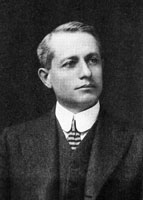 Harkin, James B.
Harkin, James B.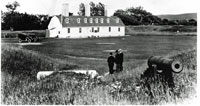 Fort Anne circa 1928
Fort Anne circa 1928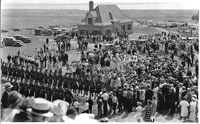 Fort Beauséjour 1936
Fort Beauséjour 1936 J.B. Harkin by Karsh 1937
J.B. Harkin by Karsh 1937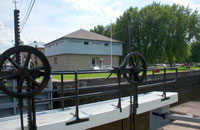 Rideau Canal Locks - Merrickville (ON)
Rideau Canal Locks - Merrickville (ON)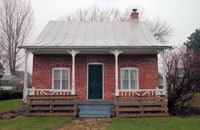 Birthplace of Sir Wilfrid Laurier, Saint Lin (QC)
Birthplace of Sir Wilfrid Laurier, Saint Lin (QC)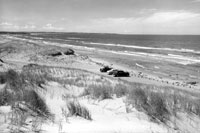 A beach at PEI National Park circa 1940
A beach at PEI National Park circa 1940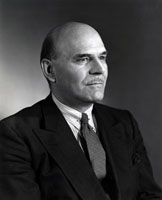 James Smart
James Smart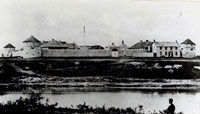 Lower Fort Garry National Historic Site, General View, late 19th Century
Lower Fort Garry National Historic Site, General View, late 19th Century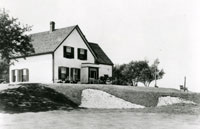 Green Gables House North and West façade, 1930's
Green Gables House North and West façade, 1930's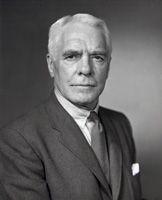 J.A. Hutchison
J.A. Hutchison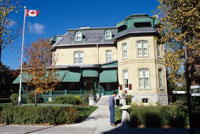 Laurier House National Historic Site, Ottawa (ON)
Laurier House National Historic Site, Ottawa (ON)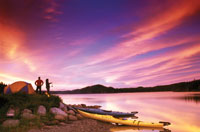 Terra Nova National Park, Newfoundland
Terra Nova National Park, Newfoundland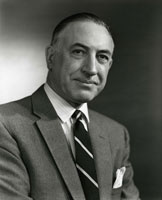 J.R.B. Coleman
J.R.B. Coleman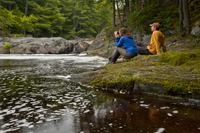 Kejimkujik National Park (NS)
Kejimkujik National Park (NS)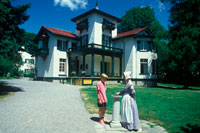 Bellevue House National Historic Site of Canada (ON)
Bellevue House National Historic Site of Canada (ON)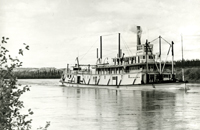 S.S. Klondike National Historic Site of Canada (YT)
S.S. Klondike National Historic Site of Canada (YT)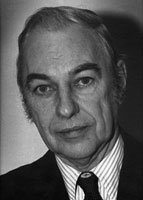 John Ingram Nicol
John Ingram Nicol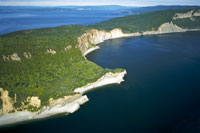 Forillon National Park (QC)
Forillon National Park (QC)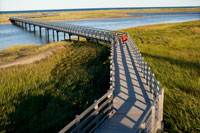 Kouchibouguac National Park (NB)
Kouchibouguac National Park (NB)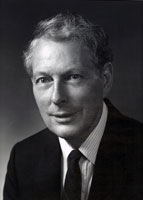 A.T. Davidson
A.T. Davidson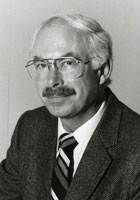 J.D. Collinson
J.D. Collinson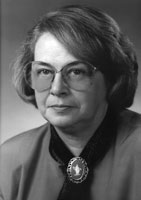 Aimée Lefèbvre-Anglin
Aimée Lefèbvre-Anglin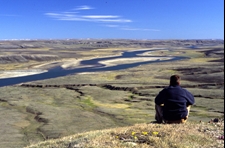 Aulavik National Park (NT)
Aulavik National Park (NT)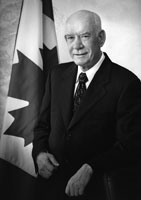 Tom Lee
Tom Lee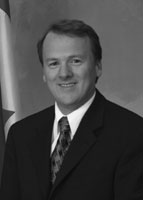 Alan Latourelle
Alan Latourelle Daniel Watson
Daniel Watson Michael Nadler
Michael Nadler Ron Hallman
Ron Hallman